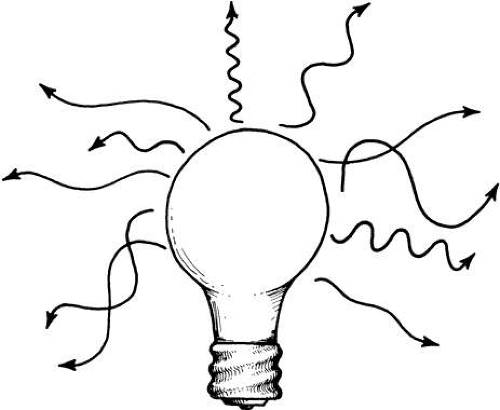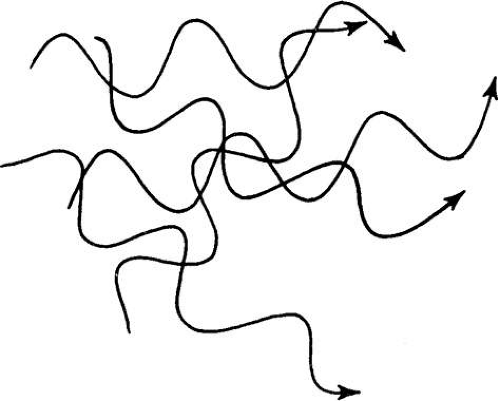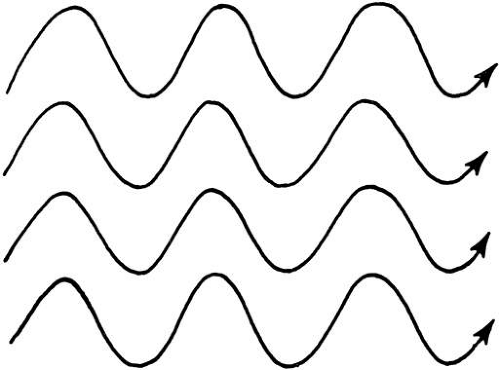Introduction to Basic Laser Physics
Robert J. Schechter
LASER LIGHT
Laser light differs from “ordinary” light in several important ways. These differences are a direct result of the manner in which laser light is generated.
Light is that portion of the electromagnetic spectrum in the so-called visible region. Electromagnetic radiation of longer wavelength consists of infrared radiation, microwaves, and radio waves. Radiation of shorter wavelength includes ultraviolet rays, x-rays, and gamma rays.
All electromagnetic radiation (EMR) travels at the same speed (in a vacuum)—the “speed of light.” Given that the speed of a wave equals the product of its wavelength multiplied by its frequency, and given also that the speed of all types of electromagnetic radiation is the same, the wavelength and frequency of all EMR are inversely related. The larger (or longer) the wavelength, the lower the frequency is. Thus, light may be referred to in terms of its frequency or its wavelength: the higher the frequency (or the shorter the wavelength), the “blue-er” the color becomes. The amount of energy in light (or any EMR) is directly related to its frequency, with blue light having more energy than red light.
White light (which is a mixture of all the colors) is composed of EMRs of varying wavelengths traveling in all directions (Fig. 1). Light of one color is said to be monochromatic and composed of only one wavelength (or of a small range of wavelengths). However, the light waves are not in phase. Although the light waves may be of the same wavelength, each wave will not be at its peak at the same time (Fig. 2). Laser light is composed of one wavelength traveling in one direction. Each wave is in phase or “in step” as well, with each component wave reaching its peak and trough at the same time (Fig. 3). Such light is said to be coherent; this is one of the important characteristics of laser light.
THEORY AND DESIGN OF LASERS
Modern physics recognizes that light has certain characteristics of a wave, yet has certain properties of a stream of particles as well. A “particle of light” is called a photon.
When a light beam (or any other EMR) interacts with matter, energy may be transferred. Classical physics, however, was incorrect in its descriptions of this energy transfer. The error was in assuming that energy was continuous (i.e., that energy could exist in any desired amount). Albert Einstein proposed that light energy could exist only in discrete units, called quanta. (For this explanation of the “photoelectric effect”—and not for the theory of relativity—Einstein was awarded the Nobel Prize in physics.) Using this quantum theory, the previously inexplicable experimental results relating to light energy could be successfully explained and predicted.
According to quantum theory, an electron or a photon, for example, can exist at one energy level or at a higher level but at nothing in between. This physical principle, discovered early in the twentieth century, provides the theoretical basis for laser operation. Thus, the laser could have been invented several decades earlier than 1960, when the first ruby laser was produced.
When light is passed through certain kinds of materials, the photons may excite electrons around certain atoms into the next higher energy level. However, the photon must be of exactly the right energy—the difference in energy between the two electron levels. (Actually, there are often several higher energy levels possible, but we simplify the discussion by assuming that there is only one.)
Energy is required to elevate the electron into the next electron energy level. Ordinarily, most atoms in the material have their “elevatable” electrons in the lower energy level. Any photon of the “right” energy can “bump” the electron into the higher energy level (Fig. 4). At some time in the future (of the order of a hundred millionth of a second!), the electron falls spontaneously back to its lower energy level. As it does so, it releases its excess energy in the form of a photon of light. This photon is of exactly the same energy (the same frequency, wavelength, and “color”) as the photon that “bumped” the electron up originally (Fig. 5). This process is called spontaneous emission. The emitted photons go off in all directions. Although they are all of the same “color,” they are not unidirectional, and they are not in phase (not coherent). (For our purposes, they are useless.)
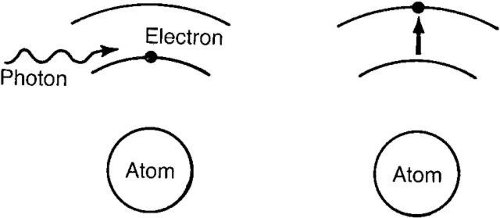 Fig. 4. A photon of the “right” energy can be absorbed and “bump” an electron into a higher energy level. |
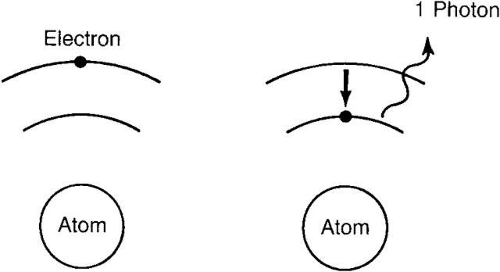 Fig. 5. Spontaneous emission. An excited electron falls back to its lower energy level, releasing a photon in a random direction. |
When light of the right energy is transmitted through a medium such as the one just discussed, photons are absorbed as electrons are “bumped” into higher energy levels. The light beam is weakened by its passage through the material (see Fig. 4). Later, the absorbed photons are re-emitted as the electrons fall down to the lower energy level, but these re-emitted photons are released in random directions and, within certain constraints, at random times.
The situation is different if an entering photon strikes an electron at its higher energy level. In this case, the photon can “knock” the electron off its perch, so to speak, back to the lower energy level. As the electron falls, it emits a photon. Thus, whereas only one photon struck the atom, two photons leave it—the original photon plus the emitted photon (Fig. 6). The second photon is traveling in the same direction as the first and is in phase with it. This process is called stimulated emission and is the basis for laser light. In fact, the term laser is an acronym for light amplification by the stimulated emission of radiation.
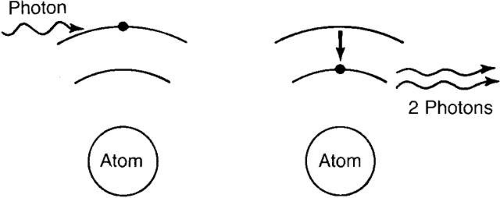 Fig. 6. Stimulated emission. A photon strikes an excited electron. The electron falls to its lower energy level, releasing a photon that is going in the same direction as, and is in exact phase with, the original photon. Note that whereas only one photon strikes the atom, two photons leave it—the original photon plus the emitted photon.
Stay updated, free articles. Join our Telegram channel
Full access? Get Clinical Tree
 Get Clinical Tree app for offline access
Get Clinical Tree app for offline access

|
